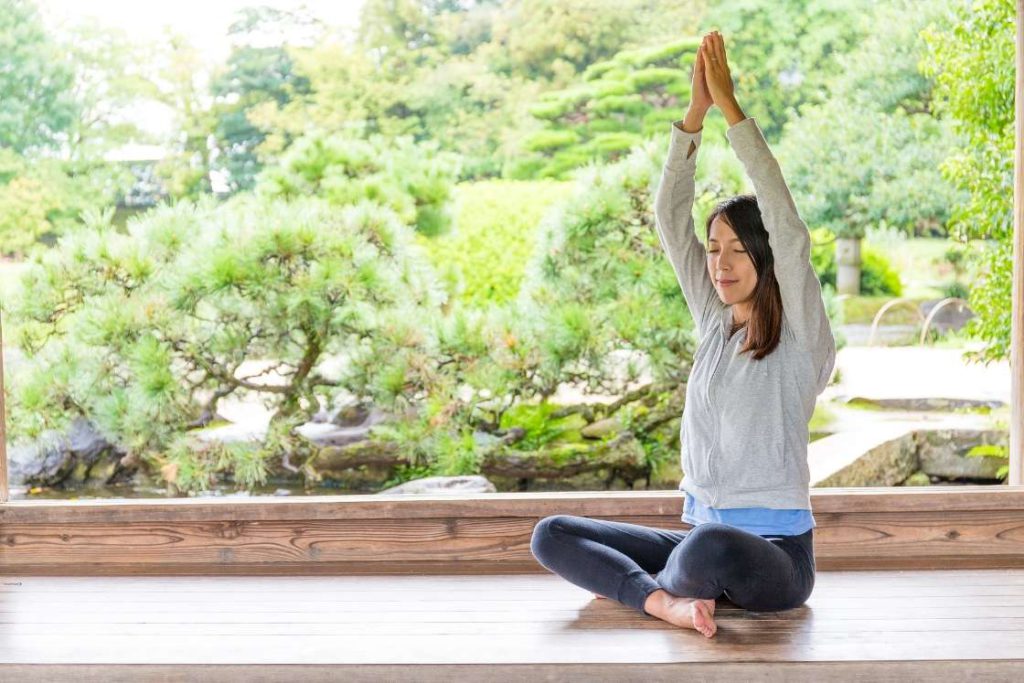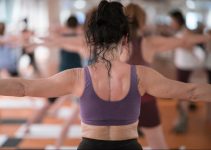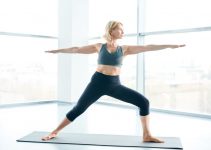
“My body is Not me, but mine. My mind is not me, but mine. I am the master of my mind and body”
~ Ilchi Lee. founder of Dahn Yoga
Dahn Yoga, a style of yoga founded by South Korean master Ilchi Lee in 1985, originated from a practice called Dahnhak. Today, Dahn Yoga is known as the Body & Brain program. The core idea of Dahn Yoga is that our life force is the communication between the body and the mind.
Origin of Dahn Yoga
The origin of the Dahn Yoga style is deeply embedded in Korean culture. The predecessor style, “Dahnhak,” means “the study of energy.” This naturally emphasizes the importance Dahn Yoga lays on the concept of Ki (life force) and breathing. The word “Dahn” refers to the life force itself, whereas the prefix “hak” refers to the study of a discipline. Now since the word “Yoga” means “unity,” the term Dahn Yoga can be interpreted as “unity with the life force.”
Dahnhak had been in existence in Korean culture since ancient times and had been a force of communal and political unity. Unfortunately in the last 2000 years, the Dahnhak practices and philosophies were lost to the world. Ilchi Lee modernized the lost art of Dahnhak and started its practice with stroke patients in Korea. He opened the first Dahn centre in 1985, in Seoul, Korea.
Features of Dahn Yoga
Every yoga or exercise style is built on simple fundamental ideas or philosophies. The actionable limbs are generally built around these central ideas. These fundamental ideas are usually reflected in the unique features of the concerned exercise style.
1. The primal focus is on life force
Dahn Yoga is built around the philosophy that our life force is the connection between our mind and the body. And thus to control our mind and body, we need to master the flow of the life force. In terms of energy regulation, Dahn yoga has 5 phases, initiating, accumulating, controlling, commanding and completing. This intense energy stimulated phases work on initiating energy at the major energy gateways (chakras) and removing blockages for proper energy flow. This energy-centred process makes the experience of practice equally joyful as the outcome.
2. A systematic focus of brain-body synchronization
According to the philosophies of Dahn Yoga, our brain is not just the biological centre but also the centre of the energy system. Thus focusing the practices toward the stimulation and healing of the brain, is foremost.
When the brain is activated to its maximum potential, it will generate stronger and controlled energy. Which will further effectively and powerfully communicate between your mind and your body.
3. Comprehensive health management
Dahn yoga techniques are holistic in the sense that they not only impact your physical health but your emotions, intellect and consciousness as well. This additionally increases your ability to self-manage your disorders and difficulties.
The Dahn practices also improve social skills and lifestyle management. Which can keep unhealthy habits and anxiety at a distance.
Benefits of Dahn Yoga
The benefit of Dahn yoga is so holistic, that pointing out one specific benefit, could be a challenge. Dahn helps you increase the flexibility and balance of your body and mind. The best part of Dahn yoga is it can be practised at any age and by any gender. And despite being an easy and joyful practice, it can still provide surprising challenges to advanced practitioners.
1. Body benefits
The breathing techniques, meridian stretching and the healing martial art forms help in developing the bodily benefits.
- Improved musculoskeletal strength, balance, flexibility and endurance.
- Therapeutic pain relief
- Improved metabolism and digestion
- Improved cardiovascular and respiratory health
- Better regulated blood flow throughout the body
2. Mind benefits
The Dahn practices focus on creating a strong bridge between the mind and the body. Thus every physical benefit can be expected to have a mental counterpart as well. Properly unifying your movements, breathing and awareness will help you achieve the following benefits.
- Improved motor skills and cognition
- Stress and anxiety relief
- Appropriate rest and sleep.
- Energised mind
- Clarity of thought and perception
- Enhanced emotional stability
- Sharp mind with high concentration and focus
3. Spiritual benefits
As you establish effective communication between mind and body, through the mastery of the energy, you will be able to unlock spiritual benefits as well. The experience of these benefits will transcend beyond the average physical and mental realms.
- Helps you trigger your inner bliss
- Liberates your mind from materialistic and emotional attachments.
- Roots you to a strict moral and ethical path.
- Brings clarity to your sense of purpose.
- Helps you contribute to well being of others
- Increases your awareness of truth and reality
- Help you unite with the universal consciousness
Understanding the concept of energy in Dahn Yoga
The umbrella concept of energy in Dahn Yoga includes many secondary concepts. It includes the life force and its different manifestations in the human body, energy channels and energy points, and energy centres.
1. The life force
The life force is commonly referred to as the Ki. The Ki is considered a primal theory in eastern philosophies, practices and medicine. It is the vital cosmic energy that is responsible for all creations.
Dahn Yoga refers to the Ki as a bio-energy. The life force, Ki, is further divided into three categories:
- Jin-Ki : It is the energy of the mind developed by deep concentrated and conscious breathing.
- Jung-Ki : Jung-Ki is the energy obtained from digestion of food sources and continuous respiration
- Won-Ki : Won-Ki is referred to as the energy of inheritance. This is the energy we are born with.
2. Energy channels and energy points
The Dahn philosophy has a very thorough and elaborate understanding of the energy systems in our body. Running all over our body much like the blood vessels and peripheral nerves.
Energy in our body flows through energy pathways, referred to as energy channels or meridians. And along these meridians, there are several acupressure points or energy points, that regulate the passage of energy. One can imagine the energy points on the energy channels, as the valves in the veins.
There are 12 primary Meridians, 8 secondary meridians and 15 important energy points. The energy mostly flows through the primary 12 meridians, and 2 from the secondary meridians are used for storing the energy. These two meridians come in contact when our lips touch. The meridians that flow upward are Yin, and the meridians that flow downward are Yang.
The 12 meridians are in the pair of Yin-Yang and systematically distributed on either side of the body. The 12 meridians carry energy to different body organs like the liver, kidney, heart, lungs and such. Energy flow starts from the lung meridian and ends with the liver meridian.
3. The energy centers
The main energy, or Dahn-jons, meaning field of energy, are key centres in your body that stores energy. The Dahn-Jons are much like the chakras of Indian yogic tradition. The Dahn-Jons are located in the lower abdomen, chest, forehead and both the palms and feet. If the Dahn-Jons are blocked its manifestation is seen in the forms of diseases and ailments.
Understanding the Philosophies of Dahn Yoga
The philosophy of Dahn Yoga is built on the previous understanding of energy concepts. The actionable practices that have the potential to act on the energy systems of our body, form the base of the Dahn yoga philosophy.
1. The cool-hot theory
The Su-Seung-hwa-gang theory, meaning water up, fire down, states that when our mind and body are in perfect harmony, cool water energy rises up to the head from the back of our body. And hot fire energy descends down to the abdomen from the front of our body. The hot fire energy is stored in the abdomen energy centre. The energy centres at the kidney and heart are believed to initiate this flow.
2. The three treasures of the human body
Sam-bo, or the three treasures of the human body are, Jung-Choong, Ki-Jang and Shin-Myung. These three ideas represent three different stages of energy processing.
The Jung-Choong refers to the absorption and storing of Jung energy in the abdomen Dahn-Jon. The Ki-Jang refers to the strengthening of your Ki, by cleansing your chest Dahn-Jon. And Shin-Myung refers to spiritual awakening by activating your upper Dahn-Jon.
3. Conscious regulation of energy
The third and final philosophy is the Shim-Ki-hyul-jung philosophy. The theory states that wherever our consciousness is focused at, the energy follows, carrying along with it a healthy blood flow and biological development. This philosophy states that with conscious and focused concentration, we can will the energy to gather resources and drive them further for biological development.
Dahn Yoga Exercises
Dahn Yoga Practices are studied and applied through four different subheads; Meridian Stretching, Jung-Choong breathing, DahnMuDo and meditation for Shin-myung.
1. Meridian stretching exercises
Meridian exercises are seen as warm-up exercises that help your body prepare for energy collection. Meridian stretching loosens the upper body and the pelvis-hip region for the collection of the energy in the abdomen Dahn-Jon. At a Dahn-Jon Yoga centre, you will come across hundreds of stretches, but the following is a list of few effective meridian stretching techniques:
- Relaxing the upper body
- Body bounce
- Whole body tapping and patting
- All joint stretches and rotations
- Standing sideward stretch
- Forward bend
- Sitting side stretch
- Sitting forward bend
- Rolling back
- Abdominal clapping
- Intestine exercise
- Supine twist
- Plow pose
- Cobra pose
2. Jung-Choong breathing
Jung-Choong means fulfilment of accumulating Jung energy in the lower Dahn-Jon. This fulfilment can be achieved by different breathing techniques and patterns. The Jung-Choong breathing also allows the upward flow of cool water energy and the downward flow of hot fire energy.
Jung-Choong breathing states that as we naturally breathe in it collects energy in our pelvis region. Then collectively using certain Postures in our tailbone, hip and pelvis we can close the outward flow of energy to saturate the energy accumulation. Further tweaking the Postures in our pelvis floor we can circulate the energy, to drive different stages of energy processing.
- For relaxation – Savasana
- For energy accumulation – wind relieving pose, reclining Bound-Angle pose, legs up the wall.
- For energy circulation – Lying leg up to plow pose
3. DahnMuDo
DahnMuDo has its roots in 5000 years old, Korean Tradition. DahnMuDo is considered the art of being limitless. This healing and martial art form establish the much needed mind-body connection. This technique includes many hand movements and leg forms, replicating non-combative punches, kicks and sword plays, that develop strength and stability of your lower body. The transition from one DahnMuDo posture to the next should be flowing like water
In the DahnMuDo form, the upper body is held loose and flexible and centred at the navel. The hip joints remain stable but relaxed. In this upper body form, the respiration required to construct the leg forms adds a significant impact on the accumulation and flow of energy. Following are some popular DahnMuDo stances:
- Bow stance – Gung-Jeon-Bo
- Horse stance – Ki-Ma-Bi
- Empty stance – Heo-Bo
- Single leg stance – Dong-Nip-Bo
- Drop stance – Bu-Toe-Bo
- Sitting stance – Il-Jwa-Bo
- Cross stance – Jwa-Ban-Bo
4. Meditation
Meditation is what establishes the Shim-Ki-hyul-jung philosophy into practice. Meditation teaches you to concentrate your consciousness and awareness, to trigger complete mind-body healing, and eventually spiritual revelation.
Hand movements, chanting, single-point focusing, Breathing and imagery are few tools of meditation used in Dahn meditation. The hand movement meditation is a dynamic meditation, helpful for beginners, known as the Ji-gam. It helps calm the mind by synchronising body movement and breath with the flow of energy.
The imagery is also quite effective in bringing your thought flow to a halt. This process focuses on visualizing specific objects or landscapes. The visual imagery can also include visualizing any of the seven chakras in the body.
Conclusion
Dahn Yoga focuses on developing control over the life force and through it the synchronization between the mind and the body. The most outstanding techniques of Dahn yoga are:
- Meridian Stretching – For upper body flexibility and lower body strength
- Jung-Choong Breathing – Synchronized movement and breathing for regulation of internal vital airs, life force.
- DahnMuDo – A blend of Dahn theories and Korean restorative martial arts for strength and flexibility
- Meditation – to increase attunement with our life force, or the Ki energy.





I took this discipline many years ago. My heart chakra was blocked and in an individual session, the instructor opened it and I felt a gush of ki. Amazing. But the practice also had cult like aspects.
I took this when. It was Dahn Hak in Honolulu Hawaii.
Glad to know there are other Westerners who also know it. Only thing i could find online. I took it in 1995 in Little Korea on Oahu. Such much to say about it. Would love to research it more and see where it is still practiced in the world.